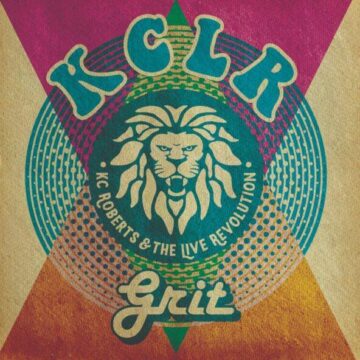
Vocally and lyrically, Stan Rogers was a true anomaly with an artist’s touch, attached to his subject matter in ways that scarcely exist today.
Stan Rogers, the great Canadian folksinger, died June 2, 1983 in a Cincinnati plane crash, but his legacy lives on and is nowhere better represented than on his spectacular live album from 1979 entitled Between The Breaks…Live! For one thing Stan was an electrifying performer with a rich and compelling baritone voice, a performer whom audiences adored; no one who saw him on stage ever forgot his dynamic way with a song. For another he was a gifted songwriter, one whose lyrics are the equal of Gordon Lightfoot; his eloquence could, and can still, wrest your heart out and deliver tears you never knew you had. Whether he was singing a cappella or with his talented band behind him, his voice was a mesmerizing force of nature, capable of leading a rousing chorus and or crooning a sweet serenade. Vocally, he had it all. Lyrically, he was a true anomaly with an artist’s touch, attached to his subject matter in a manner that scarcely exists today.
Celebrated for his devotion to the Maritime life (“The Mary Ellen Carter”), to whaling songs (‘Rolling Down To Old Maui”), to tales of pirates (“Barrett’s Privateers” and medieval mysteries (“The Witch of the Westmorland”), Stan was equally adept with creating intimate and modern love songs (“Forty-Five Years”) or subtle lyrical masterpieces of honor and violence (“Harris and the Mare”).
His studio recordings, however, never quite matched the brilliance that he captured night after night on stage. His first album, Fogarty’s Cove, came out in 1976 after he had spent a decade in various musical incarnations (rock, jug bands, solo folk), but it was only when he began singing about Nova Scotian life that he found his true calling and his audience found him. He was a prolific writer and a great judge of other people’s material. When he came across Archie Fisher’s medieval ballad “The Witch of the Westmorland’ a tale about a wounded knight and the mysterious witch who saved him, he developed an interpretation that went beyond the ethereal beauty of Fisher’s delivery and made one forget Fisher’s Scottish authenticity. Stan simply killed the song, and his backup musicians (brother Garnet Rogers on violin, David Alan Eadie on bass, the incomparable Grit Laskin on mandolin, and Curly Boy Stubbs as well as Stan on guitar) produced an excitement seldom found in folk performance. Fisher’s lyrics are a poetic treasure, with a cadence and mystification seldom found in 20th century music. Here is the final verse:
“And she’s bound his wounds with the goldenrod, full fast in her arms he lay
And he has risen hale and sound with the sun high in the day
She said “Ride with your brindled hound at heel and your good grey hawk in hand
There’s none can harm the knight who’s lain with the Witch of the Westmorland”
It was typical of Stan’s generosity of spirit that he should open his live album with Fisher’s song. He then delivers what he himself called the best performance on record, to that date, of “Barrett’s Privateers”, an intoxicating tale of a young man hired in 1778 to join a pirate crew captained by one infamous Elcid Barrett. His a capella voice in full flight, Stan is absolutely glorious on this number, with the band joining in on vocals, whoops, and shouts. This song became of Stan’s most famous, sung by people in what Stan called “the strangest places and under the oddest circumstances”.
“God Damn them All!
I was told we’d cruise the seas for American gold
We’d fire no guns – shed no tears
Now I’m a broken man on a Halifax pier
The last of Barrett’s Privateers”
The balance of the album abounds with treasures from his catalogue, among them “First Christmas” a tender, but not mawkish, treatment that explores several stories centered on observing the holidays alone. It’s one of the earliest mentions of homelessness on record, revealing Rogers to have a social conscience that resonated with the common man. Another standout track (we’re kidding ourselves here with that overused phrase – every damned track on this album deserves accolades) is “Rolling Down to Old Maui”, brought to Stan by the American folk song publisher Emily Friedman. The song’s earliest known appearance in its current form was in Joanna Colcord’s Songs of American Sailormen (1938), without a tune. However, the song is clearly related to the song “Rolling Down to Old Mohee”, collected from the 1858 log of the Atkins Adams. Stan’s rendition is perhaps the best known, and certainly the most powerful.
Stan’s early death was greatly mourned in folk music circles worldwide, particularly when it came out that Stan died of smoke inhalation trying to save other passengers. His brother Garnet Rogers (born six years later than Stan) continues as a noted folk-roots performer to this day, and Stan’s son Nathan Rogers is a talented singer-songwriter with two albums to his credit, the most recent being The Gauntlet featuring Nathan’s integration of throat-singing into his material.




Great article and introduction to an amazing Canadian songwriter who deserves all the accolades this writer has offered. Thanks so much for this piece!